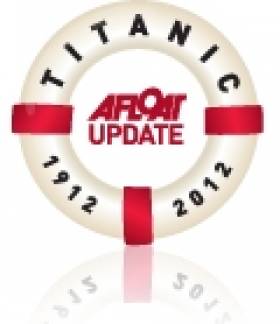Displaying items by tag: White Star Line liners
Titanic Memorial Cruise Heads for Cobh
#TITANIC MEMORIAL CRUISE - Following Balmoral's recent call to Belfast in memory of Titanic, the Fred.Olsen Lines cruiseship returned to Southampton where today she started a 12-night Titanic Memorial Cruise which will follow the White Star Line liner's original itinerary that included calling to Queenstown, now Cobh.
Before Balmoral calls to Cobh tomorrow, she is to pass Cherbourg, where the passenger tender SS Nomadic served the liner that layed anchored offshore. The 101 year-old tender was also built by Harlalnd & Wolff and she is undergoing restoration work in Belfast, to read more about her click HERE.
Likewise to Balmoral's Belfast visit, her arrival to Cobh is the inaugural call for this year's season, though her poignant arrival will be two days short of Titanic's call a century ago on 11th April 1912.
On Titanic's second anchorage at Queenstown, this too required tenders to transfer 123 passengers who embarked from the town's pier and of those only 44 survived the disaster. The timber built pier still exists albeit what survives is in a derelict state. There have been calls to raise funds to save the structure as previously reported.
Along the scenic waterfront passengers can take a tour of the town's new Titanic Experience in the White Star Line building, the Queenstown Heritage Story in the Cobh Hertiage Centre and the walking Titanic Trails.
From Cobh the Balmoral will sail across the Atlantic, arriving at the Titanic site on April 14th/15th - exactly 100 years on from this tragic voyage, where a memorial service will be held to pay tribute to the brave passengers and crew who perished on that fateful night.
The cruise will then continue to Halifax, Nova Scotia, the final resting place of many who were on board, before sailing on to New York, the Titanic's ultimate planned destination.
- White Star Line
- RMS Titanic
- Balmoral
- Fred Olsen Cruise Lines
- Titanic Memorial Cruise
- Cobh Cruise Calls 2012
- Belfast Port
- SS Nomadic
- Titanic's passenger tender
- Cruise ship news
- Cruiseships
- port of Cork
- Cobh Cruise Terminal
- Titanic Trails
- Cobh Heritage Centre
- White Star Line liners
- Queenstown,Ireland
- Harland & Wolff
- Nomadic Charitble Trust





























































